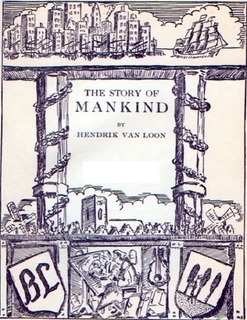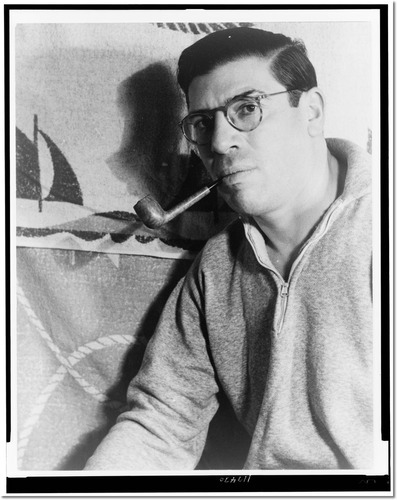To see teasers of prints being produced, visit: http://instagram.com/intellectualpropertyprints#
Or check out this video of Bob Dob, whose new 3-color screenprint, "Blood Orange," made in an edition of fifty, is one of the featured IPP prints.
The release of a new film adaptation of Fitzgerald's classic novel has reignited a mania for all things Gatsby. And why not? The story illustrates a prosperous, glamorous, yet sometimes garish, period in American society. On Monday Rebecca wrote about a new edition of Fitzgerald's first eight short stories. Today, we look at the creation of the first award for children's literature, which was the same year in which Fitzgerald set The Great Gatbsy.
While Fitzgerald described the cosmopolitan world of flapper culture set to decadent jazz music, American publisher and renowned admirer of children's books Frederic Melcher commissioned the first Newbery Medal. Melcher named the award after the eighteenth-century British bookseller and printer Jon Newbery because he is regarded as the first dedicated printer and publisher of children's literature.
Newbery felt that making beautiful and accessible books for children was essential to their development. When he published Pretty Poems for Children Three Feet High he added the following inscription: "To all those who are good this book is dedicated by their best friend."[1]
The first Newbery medal winner went to a non-fiction history book called The Story of Mankind by Hendrik Willem van Loon (Liveright). In the 1920's this book was considered the authoritative children's resource on 5,000 years of history.

Like The Great Gatsby, the Newbery Award is a uniquely American institution, since only authors contributing to American children's literature and published in the United States by an American publisher are considered for the prize.
Source: Hazard, Paul. Books, Children & Men. (M. Mitchell, Trans.).Boston: The Horn Book Co., 1944.
For artist and bestselling novelist Audrey Niffenegger--and her legion of fans and collectors (myself included)--this spring and summer is quite an exciting time. With two new books, a ballet, and a museum exhibit coming up, it might be her second wave.
 The first book is a visual novella, more akin to her recent The Night Bookmobile than The Time Traveler's Wife. Raven Girl (Abrams ComicArts, May 7, $19.95) is a dreamy, dark fairy tale, obviously meant for adults. In it, an English postman falls in love with a fledgling raven from East Underwhelm, Otherworld. The strange pair conceive a child--a ravel trapped in a girl's body, who becomes so distraught that she engages the services of a plastic surgeon to give her wings.
The first book is a visual novella, more akin to her recent The Night Bookmobile than The Time Traveler's Wife. Raven Girl (Abrams ComicArts, May 7, $19.95) is a dreamy, dark fairy tale, obviously meant for adults. In it, an English postman falls in love with a fledgling raven from East Underwhelm, Otherworld. The strange pair conceive a child--a ravel trapped in a girl's body, who becomes so distraught that she engages the services of a plastic surgeon to give her wings.
The book itself is a pleasure to behold. The bright red binding peeks out under the gray jacket that features ornate silver lettering imposed on one of Niffenegger's eerie etchings. The endpapers show ravens in varying postures of flight, and the edges are stained with metallic black.
Raven Girl has been turned into a ballet of the same name, to be performed by the Royal Ballet in London from May 24 to June 8 (Niffenegger wrote about it for the Guardian last week). Take a leap, Odile.
 The second book, Awake in the Dream World (powerHouse Books, May 14, $29.95), is, essentially, an illustrated catalogue for a mid-career retrospective that opens on June 21 at Washington, D.C.'s National Museum of Women in the Arts (NMWA). Printworks Gallery in Chicago, which has represented Niffenegger for thirty years, has done several group and solo shows of her work, but the NMWA exhibition is the first major museum exhibition devoted to Niffenegger. There will be 239 of her paintings, drawings, prints, and book art on display.
The second book, Awake in the Dream World (powerHouse Books, May 14, $29.95), is, essentially, an illustrated catalogue for a mid-career retrospective that opens on June 21 at Washington, D.C.'s National Museum of Women in the Arts (NMWA). Printworks Gallery in Chicago, which has represented Niffenegger for thirty years, has done several group and solo shows of her work, but the NMWA exhibition is the first major museum exhibition devoted to Niffenegger. There will be 239 of her paintings, drawings, prints, and book art on display.
Like the forthcoming exhibit, the 120-page book is organized around three central themes: Adventures in Bookland for her artist's books and visual novels; States of Mind for twenty-two self-portraits; In Dreamland for her darker, fantastical artworks. An unjacketed hardcover with a striking cover (one of Niffenegger's self-portraits, Moths of the New World, 2005), the book also contains essays by Niffenegger, NMWA curator of book arts Krystyna Wasserman, and Art Institute of Chicago curator Mark Pascale. It's a stunning collection of Niffenegger's art, and I'd highly recommend it to anyone with an interest in visual art and contemporary book art.
Niffenegger fans might be interested to read part of an interview I did with her in 2011 when we met in Chicago.
Images: Raven Girl, courtesy of Abrams ComicArts. Awake in the Dream World by Audrey Niffenegger, published by powerHouse Books, courtesy of powerHouse Books.


F. Scott Fitzgerald's first eight short stories, originally published in The Saturday Evening Post, are out in a new edition (print or digital), complete with the original illustrations, cover art, reproductions of the Post pages, and an introduction by the Post's historian, Jeff Nilsson.
On sale May 7, Gatsby Girls is a collection of Fitzgerald's 'flapper stories,' e.g., "Myrna Meets His Family," "Bernice Bobs Her Hair," and "Popular Girl I." All were published between 1920 and 1922, before his Great Gatsby appeared in 1925.
"By the time he published The Great Gatsby, F. Scott Fitzgerald was already one of the best known authors in America thanks to The Saturday Evening Post," said Nilsson. "Through a span of 17 years the magazine published 68 of his short stories, and with 2.5 million subscribers, the Post brought Fitzgerald into the living rooms of Americans who might never have encountered his novels."
The new edition of Fitzgerald's early stories is a collaboration between The Saturday Evening Post, SD Entertainment, and BroadLit. With the much-anticipated film of The Great Gatsby, starring Leonardo DiCaprio, about to smash the box office, what better time to turn your gimlet eye on the stories and the art that not only preceded it but offers literary and cultural context for the novel that is considered Fitzgerald's most famous.

"The Abandoned," by Paul Gallico; The New York Review of Books, $15.95, 312 pages, ages 8-12.

While trying to save a stray cat from certain death, eight-year old Peter is struck by a coal truck and thrown to the side of the road. During the resulting coma he is magically turned into a fluffy white cat. Unrecognized by Nanny, (the boy's parents are apathetic and generally uninvolved in his upbringing) he is chased from home. A fellow stray named Jennie helps Peter navigate the rough and violent London streets in this classic adventure/fantasy novel originally published in 1950.
This book is catnip to those who adore cats. Yet for those who may not be of the feline persuasion, it's a worthy read nonetheless. It's easy to see why J.K. Rowling is a fan of Gallico's skill at intertwining magic with reality, and some sections of the book recall scenes from the various Harry Potter books.
The undercurrent of disappointment and unhappiness makes this a captivating story for adolescent readers as well as older readers looking for a whimsical tale filled with exploits and bravery. The Abandoned also chronicles the daily struggle of a city stray, from participating in catfights to finding cozy spots to spend the night.
Last published in the United States in 1991, The Abandoned is now being republished by the New York Review of Books. According to Bookfinder.com, this work has been one of the most sought-after out of print titles in the United States for the past three years. This edition is bound in striking red cloth and the cover is graced with a beautiful Palmer Brown watercolor of two cats sitting in a shipyard.
In addition to writing children's books, Gallico (1897-1976) was a sport's columnist for the New York Daily News and short story writer. Some of his works were adapted to film, most notably The Poseidon Adventure in 1972.

photo credit Carl van Vechten

